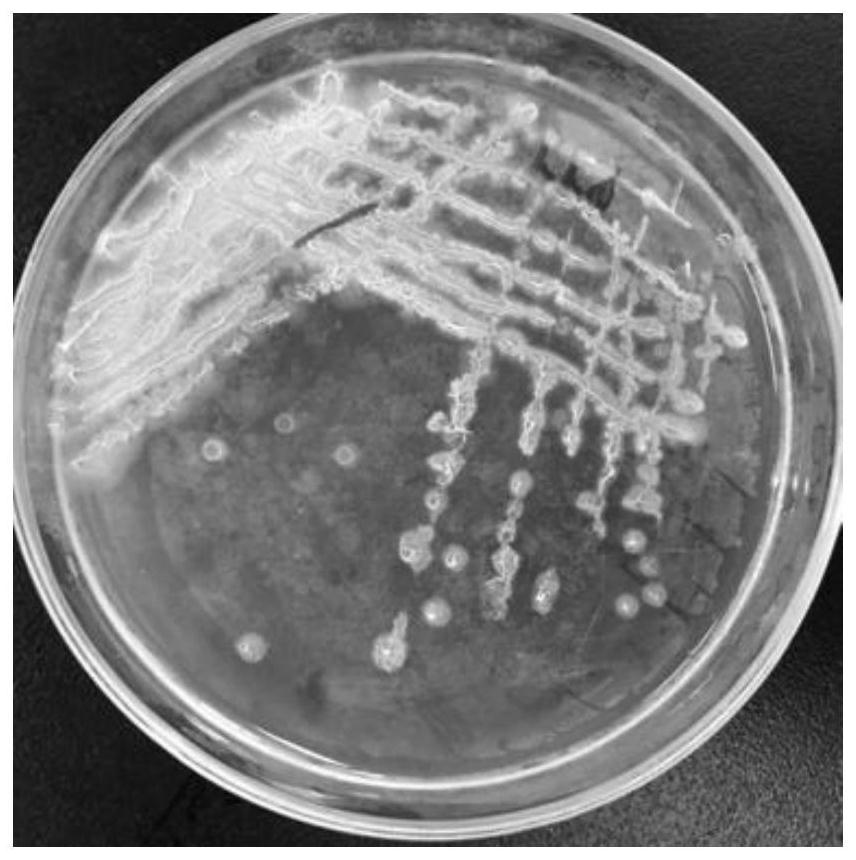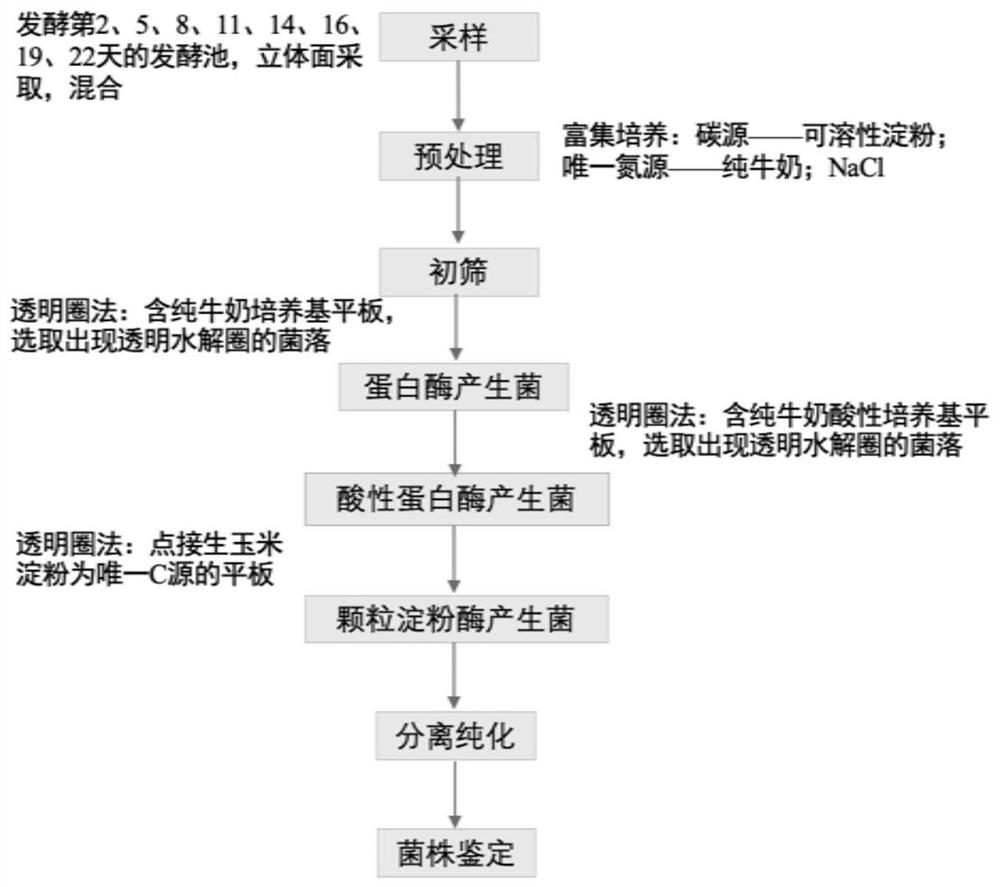ZHONGCUN bacillus QH-20011 with low pH tolerance and application of ZHONGCUN bacillus QH-20011
A technology of Bacillus and tolerance, applied in the field of microorganisms, can solve the problems of insignificant improvement of amino acids in cellar vinegar and bran vinegar, poor low pH tolerance, etc., to improve protein utilization, soft and long taste, and improve starch utilization rate effect
- Summary
- Abstract
- Description
- Claims
- Application Information
AI Technical Summary
Problems solved by technology
Method used
Image
Examples
Embodiment 1
[0044] The breeding of Bacillus nakamurai (Bacillus nakamurai) QH-20011, such as figure 2 shown, including the following steps:
[0045] 1. Preliminary screening of protease-producing bacteria
[0046] The present invention selects the vinegar grains fermented for the 2nd, 4th, 6th, 8th, 10th, 12th, 14th, 6th, 18th, 20th, 22nd, and 24th day respectively from the vinegar grains fermentation tank of the applicant's own natural fermentation state, and takes samples The method is to take vertical samples from the surface of the fermented grains of vinegar to the bottom around the fermentation tank, and then uniformly mix the fermented grains of vinegar samples from different fermentation periods to obtain strain screening samples. The specific method of screening: Weigh 100g of vinegar unstrained spirits sample and place it in 1000mL of 0.85% physiological saline, shake it and let it stand still, take the supernatant into the enrichment medium, and culture it at 30°C and 150r / mi...
Embodiment 2
[0064] Identification of strain QH-20011
[0065] 1. Morphological identification:
[0066] The strain QH-20011 screened in Example 1 was inoculated on a solid medium and cultured at 37°C for 24 hours to form milky-white colonies with irregular shapes, soft texture, slightly protruding middle folds, a small amount of mucus, and irregular edges. 1-4mm. Gram stain observation: pink short rods, such as figure 1 shown.
[0067] Composition of solid medium: sodium chloride 10g / L, peptone 10g / L, yeast powder 5g / L, agar 20g / L, solvent is deionized water.
[0068] 2. Physiological and biochemical identification:
[0069]Using the Biolog (GENⅢ) automatic microbial identification system, 94 kinds of phenotypic tests were carried out on the strain QH-20011, including 71 kinds of carbon source utilization detection and 23 kinds of chemical sensitivity detection: the bacterial strain QH-20011 was inoculated on the BUG plate medium ( BIOLOG UNIVERSAL GROWTH AGAR), cultured at 33°C for ...
Embodiment 3
[0078] Preparation of fermentation liquid and seed liquid:
[0079] 1. Incline cultivation:
[0080] Bacillus Nakamura QH-20011 was inoculated into the slant medium, and cultured at 35°C for 48 hours to obtain slant bacteria; the final concentration of the slant medium was: peptone 10g / L, yeast powder 5g / L, NaCl 10g / L, agar It is 20.0g / L, the solvent is deionized water, the pH value is 3.0 (adjusted with lactic acid), the agar and the medium are sterilized separately, and they are mixed before being used on the plate.
[0081] 2. Seed cultivation
[0082] Divided into primary seed cultivation and secondary seed cultivation.
[0083] Primary seed culture: pick an inoculation loop bacterial cell from the slant and inoculate it into the seed medium, and cultivate it at 35°C for 24 hours to obtain the primary seed liquid; the final concentration of the primary seed medium consists of: peptone 10g / L , yeast powder 5g / L, NaCl 10g / L, solvent is deionized water, pH value is 3.0 (ad...
PUM
| Property | Measurement | Unit |
|---|---|---|
| diameter | aaaaa | aaaaa |
| concentration gradient | aaaaa | aaaaa |
Abstract
Description
Claims
Application Information
 Login to View More
Login to View More - R&D
- Intellectual Property
- Life Sciences
- Materials
- Tech Scout
- Unparalleled Data Quality
- Higher Quality Content
- 60% Fewer Hallucinations
Browse by: Latest US Patents, China's latest patents, Technical Efficacy Thesaurus, Application Domain, Technology Topic, Popular Technical Reports.
© 2025 PatSnap. All rights reserved.Legal|Privacy policy|Modern Slavery Act Transparency Statement|Sitemap|About US| Contact US: help@patsnap.com



